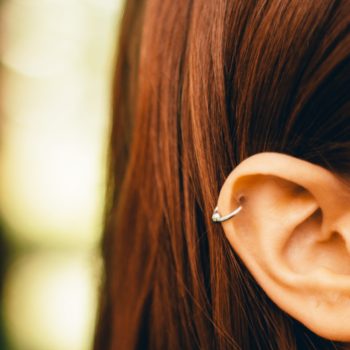It’s not just the weather. The electromagnetic pollution emitted by the screens of computers and mobile phones can also have negative effects on our skin and alter the collagen fibers. Cov (Volatile Organic Compounds), City Syndrome, blue light are all the new terms used by major cosmetic companies to talk about all the harmful exposures that alter the functions of the epidermis. With over 36 billion tons of CO2 released into the air every year and 92 percent of the world’s population breathing a very poor quality air, saturated with gases, metals in fine particles and different types of particles, while indoors, where we spend 90 percent of our time, the air can be up to ten times more polluted than outdoors. We talked about it with Dr. Alessandra Narcisi, dermatologist at the Humanitas Clinical Institute.
The techno-enemies of our skin
From toasters to televisions, from home wall paints to air conditioners and candles. The polluted air is by now only the primary source of pollution that can affect the integrity of the hydrolipidic barrier of the skin, changing it. More recent studies have in fact shown that the new lifestyles, which are dominated by digital instruments and with most of the hours spent in closed environments, expose the body and the face in particular, to an increasing number of attacks, such as Cov, Volatile Organic Compounds, and a form of pollution for which blue and epigenetic light would be responsible.
Pharmaceutical companies’ reactions
At the forefront of the search for new forms of pollution harmful to the skin and their solutions are of course cosmetic companies. They are the ones who lead the group of experts who claim by now that we should talk about “pollutions”, in plural terms. If more than 36 billion tons of CO2 are released each year into the air outside, according to studies by the Global Carbon Project organization and 92 percent of the world’s population breathes an air of very poor quality, saturated with gas, metals present in fine particles and different types of particles, inside, indoors, where we spend 90 percent of our time, the air can be up to ten times more polluted than outside. Not to mention the effects of the famous “blue light”, a source of pollution for the skin and eyes resulting from electronic devices and modern technological devices, even more dangerous than UV because it does not produce immediate effects, nor easily investigated.
What is Digital Aging?
A new way to call wrinkles and discomfort caused by technological devices is called Digital Aging.
“One of the factors for early aging of the skin that affects women and men at all ages and manifests itself with wrinkles on face and neck as a result of electromagnetic waves emitted by the screens of PCs, smartphones and tablets – explains Dr. Narcisi -. The electromagnetic waves emitted by the screens increase the temperature of the tissues favoring the overheating of those rich in water such as the dermis and thus leading to the deterioration of collagen fibers with the consequent onset of wrinkles and double chin.
But the 2.0 pollution has another great protagonist: plastic. Volatile Organic Compounds (VOCs) are potentially harmful particles emitted by many everyday objects and in particular those that “smell new”: formaldehyde, toluene, acetaldehyde, acetone that “pollute” the interior, home and office in particular. According to the EPA, the American agency for the protection of the environment, an average individual spends 80 percent of his time at home and in the workplace, and domestic pollution is a real daily danger, also highlighted by the World Health Organization which, while warning against exposure, is not yet the same with the pollutants that are hidden in the home and in enclosed spaces in general. In short, indoor pollution is a trap still to be explored and that cosmetic companies have started considering just recently.
Possible treatments
The cosmetic companies are competing to produce new anti-pollution lines. The new compounds use basic ingredients of vitamins C and E and peptides, which are generally substances that act against oxidation or have anti-inflammatory and soothing functions. Anthocyanins and flavonoids are also effective, as are anti-oxidant substances that can fight toxins, such as resveratrol and lycopene. However, the barrier effect of the epidermis must also be enhanced because, if it is not intact, it allows easier access and accumulation of particles. It is therefore advisable to reconsolidate the surface cells using sera based on ceramides, the phospholipids that recreate the bonds between the cells, to make them stronger and able to regenerate.








